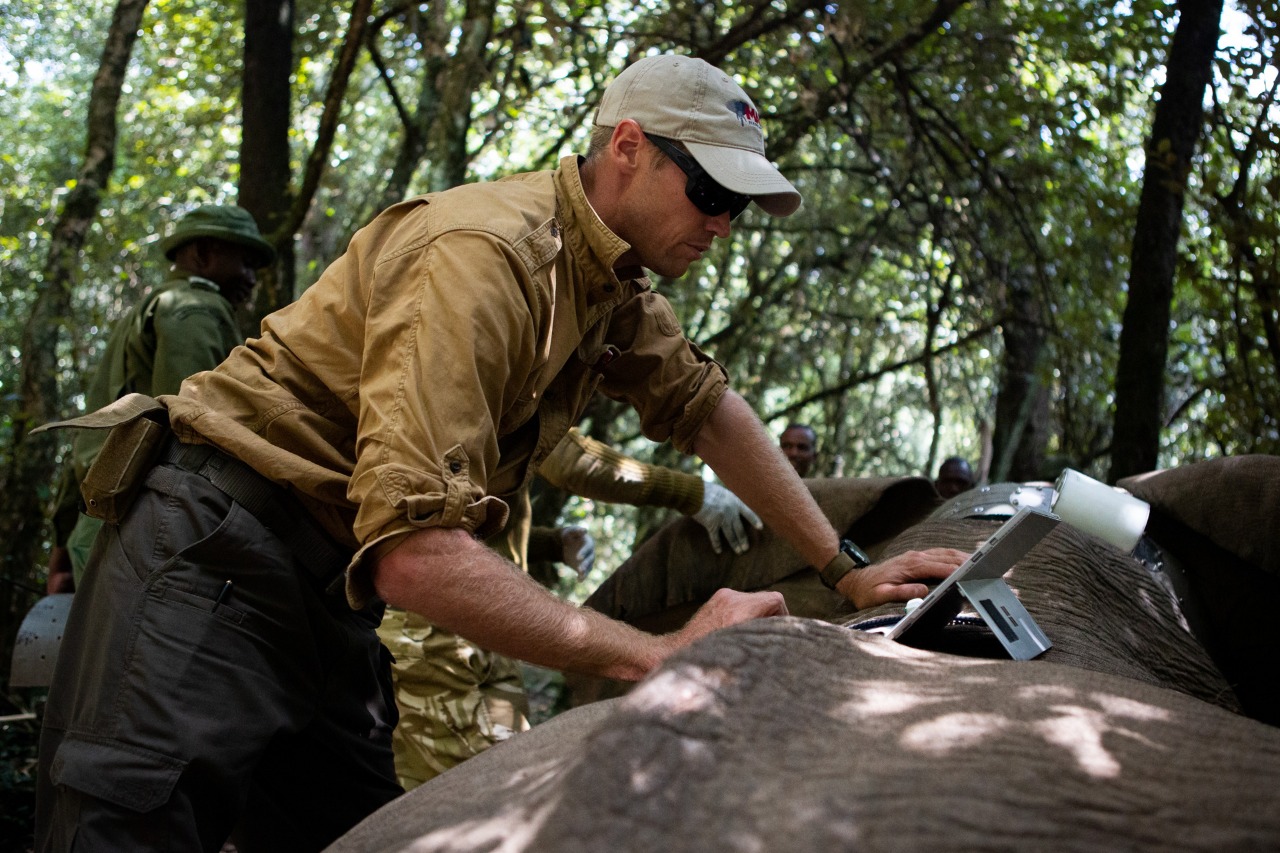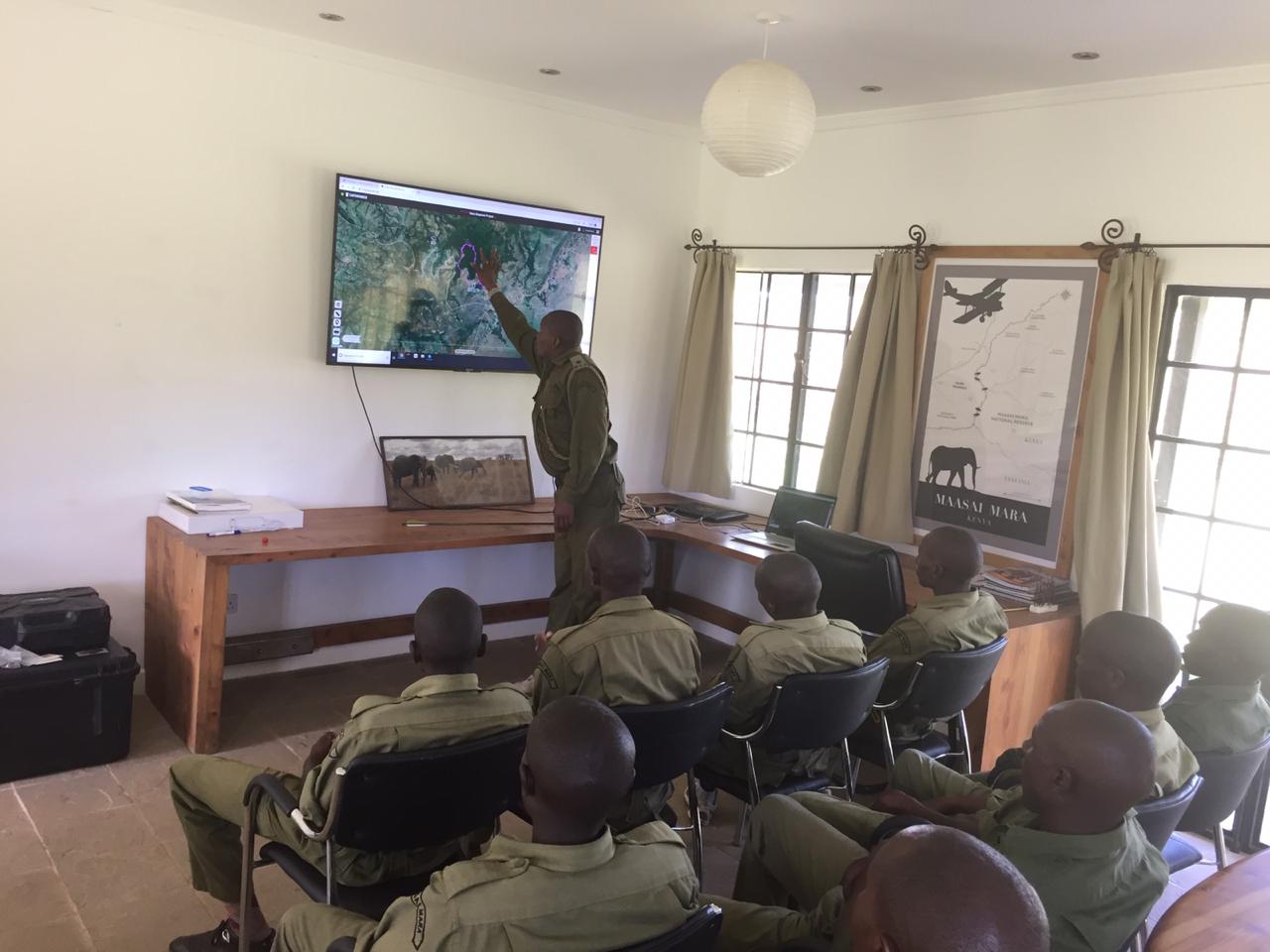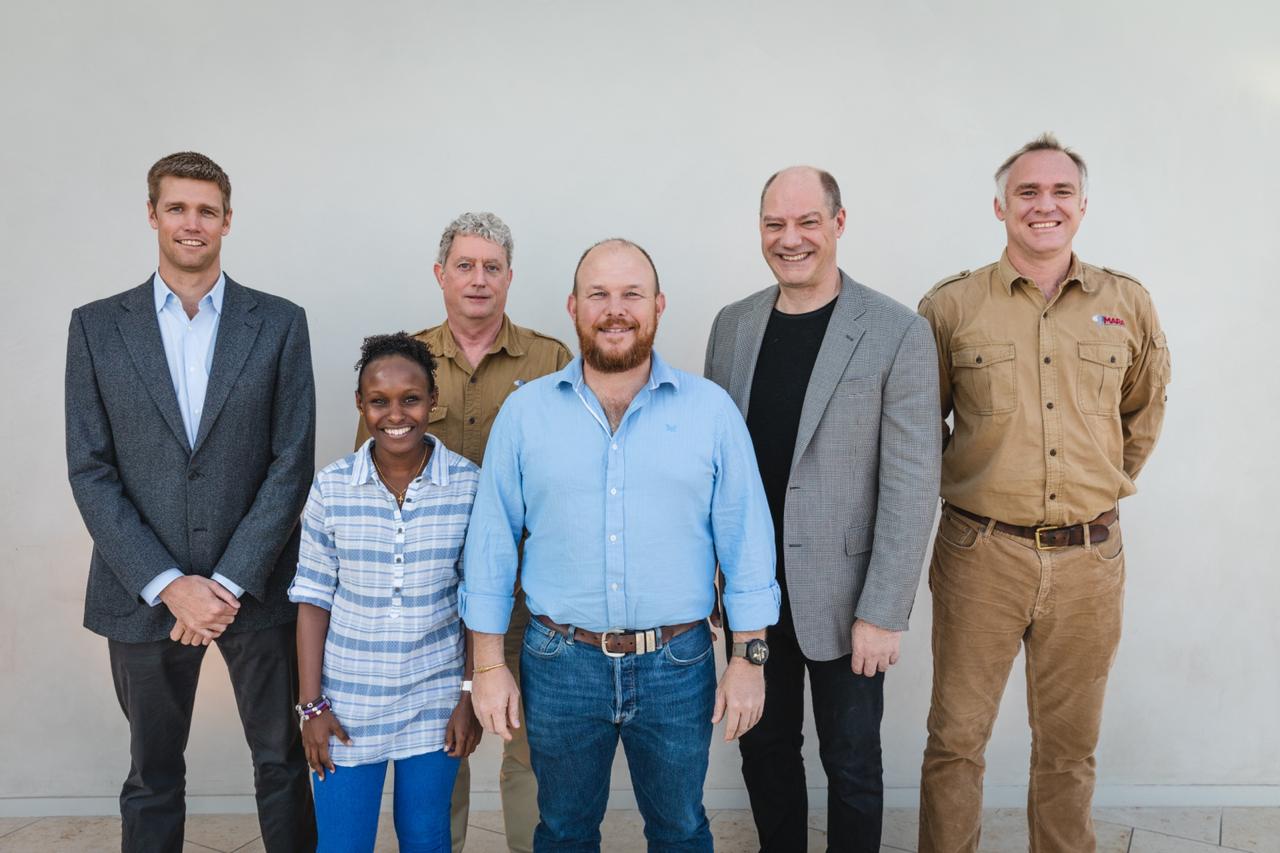After joining Mara Elephant Project as the director of research and conservation in January 2019, Dr. Jake Wall immediately set out to implement more reliable data collection procedures and streamline reporting for the organization. As of April 2019, all of MEP’s datasets now reside within a cutting-edge system co-developed by Jake, Save the Elephants and Vulcan Inc., called EarthRanger. Jake is one of the original architects of EarthRanger, which streamlines conservation data processing by integrating tracking data from wildlife, vehicles and rangers along with field-based event data such as the location of snares or elephant sightings. The data are stored in a secure cloud platform and readily accessible to visualize through the EarthRanger web app, an iOS app, Google Earth or to be downloaded for further analysis within GIS software.

Dr. Wall collaring an elephant in 2019.
In September 2019 Jake established a database called ‘Landscape Dynamics’ designed to host spatial data layers. The Landscape Dynamics database gives geographic context to the tracking and event data stored in EarthRanger. Spatial layers such as hydrology, human infrastructure, salt licks, tourist lodges, and forest cover, and their changes through time, all help to explain why elephants move the way they do. MEP has now developed an Android app called ‘Njia’ to facilitate collecting spatial data layers in the field using an mobile phone, and includes fences and roads among other features. We started a comprehensive fence mapping exercise in November 2019 and we now have two field-based research assistants using motorbikes to map fence development across the Mara and stream these data into the Landscape Dynamics database.

MEP rangers in a training at MEP HQ.
MEP’s own instance of EarthRanger is not only helping us to evaluate our assets in real time, it can also be used in collaboration with other organizations that share a similar mission. In September 2019, we started streaming data from wildebeest collared the Mara/Serengeti by the University of Glasgow and the Smithsonian Institute. The movement data collected from these other species now appear on the MEP EarthRanger system alongside our elephant and ranger movements. Using a common platform helps to promote collaborations with other research groups. Overlaying elephant and wildebeest movement data gives us insight into how they both use space together. One theory is that elephants tend to disperse from the Mara Reserve when the migration arrives, and we want to test that theory quantitatively.
“Using EarthRanger as our primary data collection and storage tool will help us toward our long-term goal of protecting elephants and their environment and will promote research, collaborations with other organizations and data-driven conservation.” Dr. Jake Wall
Looking ahead, the MEP research department continues to improve upon MEP’s EarthRanger system. We are now using the automated ‘GLAD’ forest-loss detection system developed by the University of Maryland, and recently integrated into EarthRanger, to detect forest loss events and respond to these in near real-time by sending our helicopter or ranger teams to investigate. We’ve been finding these alerts to be very accurate and our teams often discover illegal logging or charcoal kilns at the GLAD event locations. We are also codeveloping an app with Vulcan called ‘Roam’ that turns an Android phone into a tracking device capable of pushing GPS data to EarthRanger in real-time and presenting a low-cost solution for vehicle and Ranger tracking. Additionally, Dr. Wall has started developing an open-source data analysis tool for producing automated outputs of all of the data collected in EarthRanger that can be used in papers, reports or for external communications. The functionality of this analysis system will be further extended over the next year.

One of the motorbikes used for fence line mapping.
Many of these advances were made possible thanks to support from Vulcan, Esri, the Microsoft AI for Earth program and Smithsonian. Given all of the tech projects MEP is involved in we have need for support from developers and those interested in helping with solve technical conservation challenges. Please email us at admin@maraelephantproject.org if you are a developer and wish to volunteer on any of these projects.
 Dr. Wall along with MEP CEO Marc Goss and the Vulcan team during a visit in 2019.
Dr. Wall along with MEP CEO Marc Goss and the Vulcan team during a visit in 2019.


